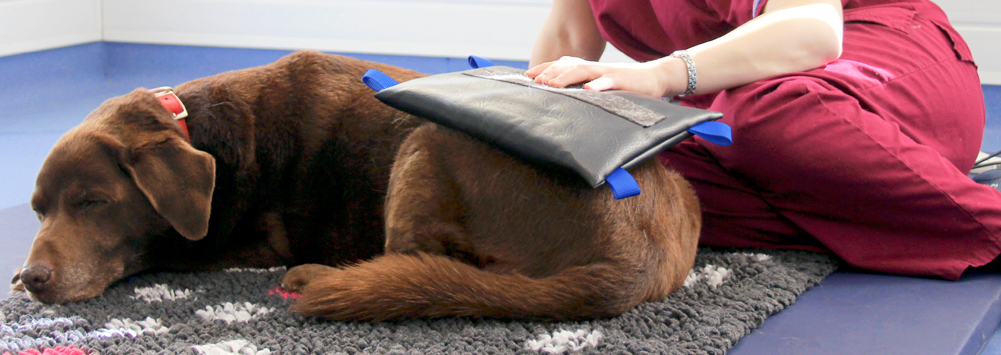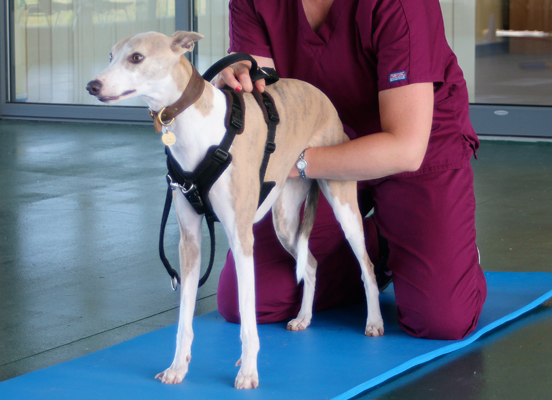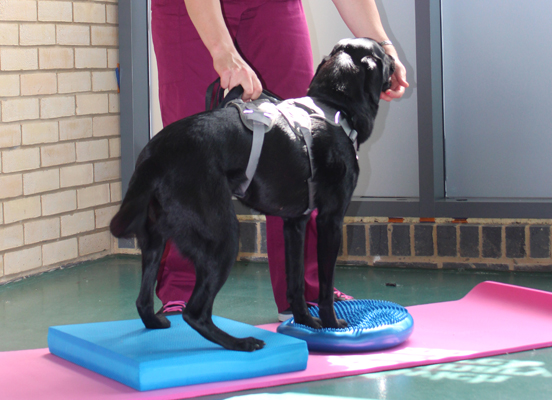We offer a variety of land based physiotherapy techniques, to help a range of different species.
Electrotherapies
Electrotherapies are usually well received by patients, often causing major relaxation during treatment sessions.
Pulsed electromagnetic field therapy (PMF)
A range of frequencies offering treatment for soft tissue injuries, fracture repair enhancement and pain relief. PMF effects the cellular membrane by re-establishing normal ionic flow. This may reduce oedema, enhance wound repair and aid re-vascularisation of damaged tissues.
Laser therapy
A visible, red light emitter used to stimulate tissue healing and can be used for healing wounds (eg. Post surgery), scar reduction and deeper tendon injuries.
Neuromuscular electrical stimulation
Neuromuscular electrical stimulation (NMES) uses small electrical impulses to stimulate muscle contraction. For example, this can be used to help prevent disuse muscle atrophy, in a recumbent patient.
Transcutaneous electrical nerve stimulation
Transcutaneous electrical nerve stimulation (TENS) uses small electrical impulses to block pain signals sent to the brain, providing drug free pain relief.
Thermal therapy
Applying heat to a problematic area can increase blood flow to that area, relieving pain and reducing stiffness and muscle spasms. Heat pads are an excellent way to deliver heat therapy and are well tolerated by patients.

Cryotherapy
Cryotherapy is the application of cold to the body. This can be in the form of cold ice packs that are placed onto a problem area. Cryotherapy offers a variety of benefits for soft tissue, including anti-inflammatory, antispasmodic and analgesic effects.
Soft tissue massage
Manual massage therapy is often used with injury rehabilitation. It aims to improve circulation, relieve muscular tension and aid mobility. It is a good technique to develop a rapport between patient and therapist and can be passed on to the owner, to carry out at home.
Passive range of movement
Passive range of movement involves a therapist manipulating a joint or limb through a normal range of movement. This can help to alleviate joint stiffness in an arthritic patient.
Active range of movement
Active range of movement involves the patient completing a specific movement, for example, a sit to stand transition.


Hydrotherapy or physiotherapy or both?
In most cases, patients will benefit from a combined course of hydrotherapy and physiotherapy but some cases may require just one or the other. Our therapist will discuss the requirements of the patient in question and assess their specific needs, in order to provide the most effective therapy programme available.
Insurance
Hydrotherapy and/or physiotherapy is often covered by insurance companies but we advise that you check with your individual insurance company prior to commencing treatment.
